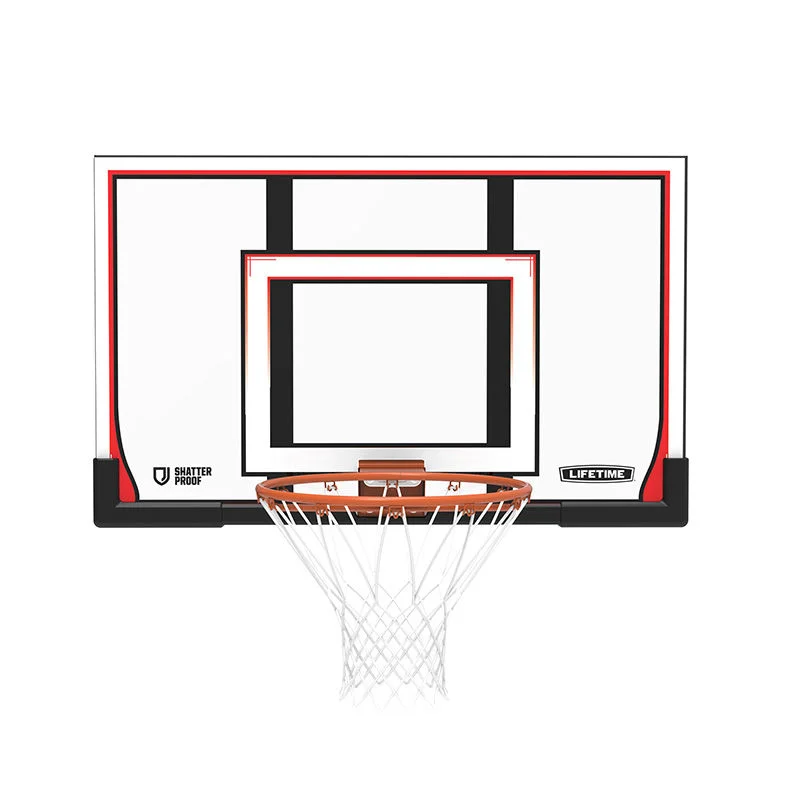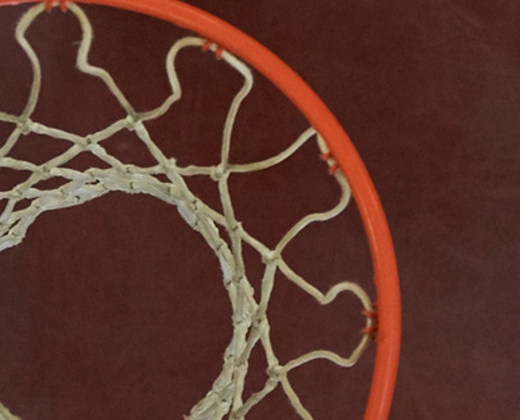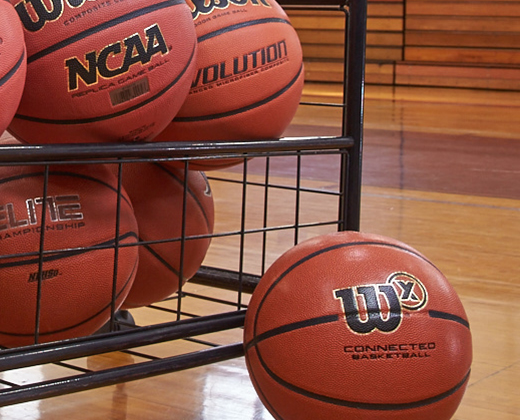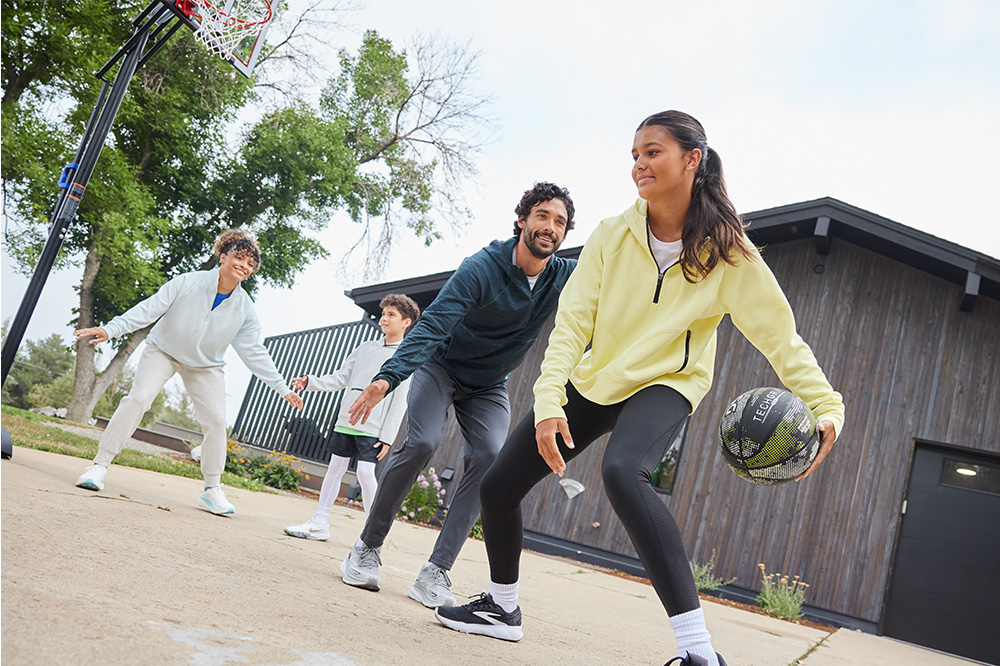Basketball Hoop Buying Guide
Show off your court skills at home by finding the hoop that fits your needs.
Whether you’re helping your future playmaker improve their game or just looking to shoot free-throws in your spare time, a basketball hoop can become a cherished part of your home for the whole family.
But where do you start? Which kind of hoop is best for you and your needs? You’ll need to take into account a variety of factors, from location to backboard material. There are a number of styles and combinations, so let’s take a shot to find the type that best suits you.
Do you already know which type of hoop you need? Shop all basketball hoops at DICK’S and get the game going!
Location, Location, Location
Before buying your basketball hoop, you’ll want to have an area with plenty of space. A flat, paved spot is usually best, making driveways a popular option.
If you decide to place a basketball hoop on the street or sidewalk, just be sure to keep street safety in mind. Some neighborhoods prohibit installation on these public spaces, so check with your borough first.
Types of Basketball Hoops
Once you know where your hoop will go, start looking at the different types that are available. Each has its own benefits, with designs created for a variety of players:
In-ground hoops can offer exceptional stability and durability. These hoops are typically fastened to the ground in one of two ways. The traditional method is to place the pole directly into the ground and seal it with cement — a great option if you plan to keep the hoop in a permanent location. However, if you’d like more freedom to move the hoop, there are also anchor-mounted options in which the pole is fastened to a plate that sits atop the ground. This gives you the ability to unfasten the pole and move the hoop to a different spot (or even a different home if you move).
If you’re looking for convenience, you may want to consider a portable hoop. These stand-alone models feature bases with wheels, allowing you to move the hoop quickly when needed. The bases typically range in size from 27–42 gallons, and they can be filled with water, sand or BaseGel for stability. And, because there is no digging or hanging required, portable hoops tend to have the most straight-forward assembly.
These models typically feature a backboard and hoop that can be mounted onto a structure, like a garage or exterior wall of your home. These hoops offer superior stability and allow you to make a court with limited room. Many mounted hoops are set at a fixed height, though there are some that can be adjusted.
Basketball Backboards
The material used in the backboard will affect how the ball bounces off of it as well as the hoop’s overall durability.
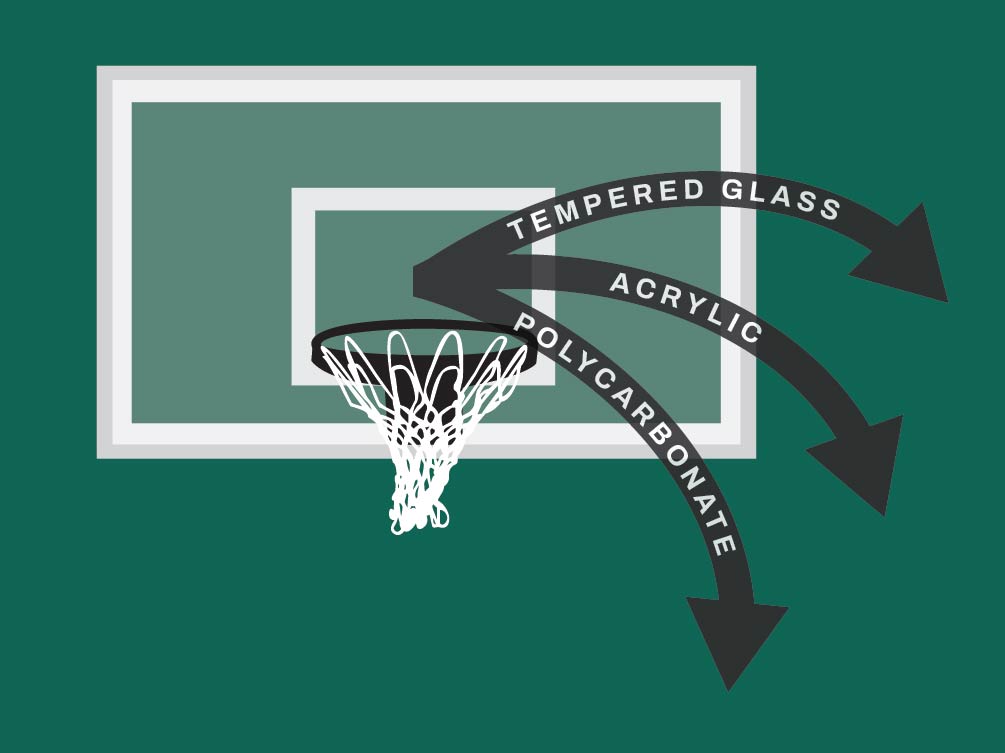 Here, you can see the type of bounce players can expect off of different backboards.
Here, you can see the type of bounce players can expect off of different backboards.
Types of Backboards
- Tempered Glass: This is the material used at the pro level. Tempered glass offers players a similar bounce and spin they’ll find in gyms.
- Acrylic: These hoops offer the look of glass at a lower price. They also tend to be lightweight, so they don't need as much support. More experienced players may notice a different bounce or spin than they'd see at the gym.
- Polycarbonate: These backboards are highly durable and offer a similar bounce as acrylic. They are designed to withstand the elements.
Backboard Sizes
Also take into account the size of the backboard. These can range from 44" up to 72", which is the regulation size at the professional level. The smaller-sized backboards, typically between 44" and 54", save on space and are good for a standard two-car driveway. The 60" backboard is a great midway point, saving space but still offering a larger size for banking shots.
Backboard Shapes
Backboards generally come in two distinct shapes: rectangular and fan-shaped. Rectangle backboards are more common and offer players more space to spin the ball off the glass. The fan-shaped backboards tend to take up less room. Sometimes, it can come down to which look you like better.
Other Basketball Hoop Essentials
After figuring out which type of hoop and backboard best fits your needs, you will want to take into account what makes up the rest of the hoop:
- Basketball Rims: The standard rim on a basketball hoop is 18" in diameter. Most modern hoops are equipped with a breakaway, spring-loaded rim. The springs may be exposed in some lower-priced hoops while most higher-priced options have the springs enclosed to help protect it from the elements.
- Basketball Poles: If you are buying a portable or in-ground hoop, take into account the type of pole used. Round poles are typical for portable and smaller in-ground options. Made of multiple pieces, these are not designed for dunking. A square pole holds up better against shaking and vibrations. These components are made of a single piece of steel and can help provide the support for heavier backboards as well as players looking to dunk. Also, if you’re considering an in-ground hoop, make sure to check if the pole is designed to go directly into the ground or if it bolts down on top of a plate. Go with the plate-mounted option if you want freedom to move the hoop.
- Basketball Nets: Hoops commonly come with nets made of nylon. But you can also use a chain link net, which can have a long lifespan but also rust if left out in wet weather. Breakaway net clips can be added. They will disengage if too much pressure is applied.
- Bases: This is exclusive for portable basketball hoops. These bases are typically filled with water or sand to keep the hoop grounded. Another popular option is BaseGel. When you combine this gel with just 16 oz. of water, it hardens and becomes the equivalent of eight, 50 lb. bags of sand. For more advice, check out the Pro Tips guide to filling a portable basketball hoop.
- Height Adjustment: Depending on the type of hoop you buy, it may come with a height adjustment mechanism. This is a good option for parents who have a younger player not ready to play on a full-size hoop but will grow into it. Most of these hoops can adjust from 7 1/2 ' up to 10', though some come with a larger range.
You can find all of the basketball hoop accessories you need at DICK'S.
Now that you know what to look for it’s time to turn your space into your own personal court. Once you have your hoop set up, you’ll be ready to show off your skills to the rest of the neighborhood.




